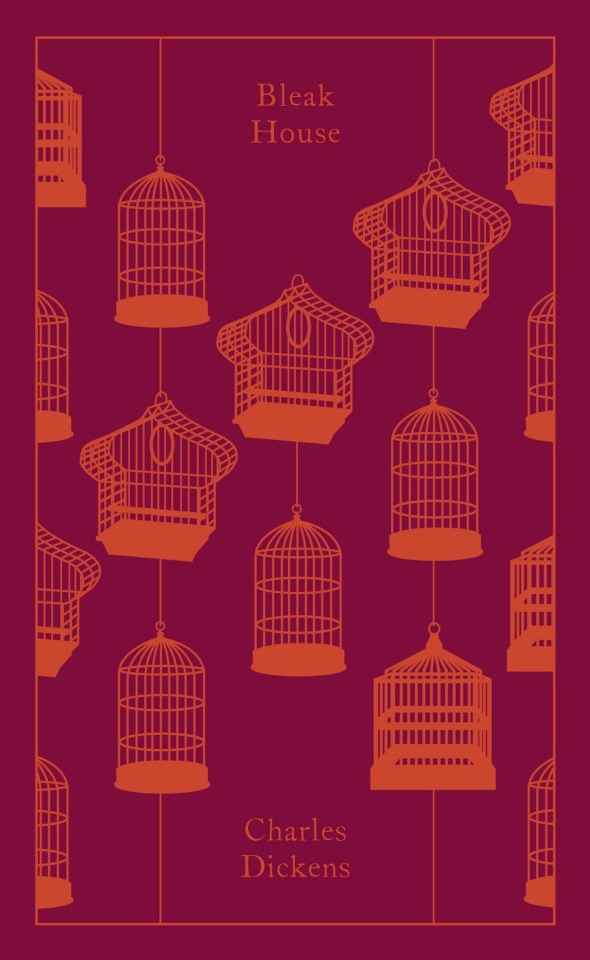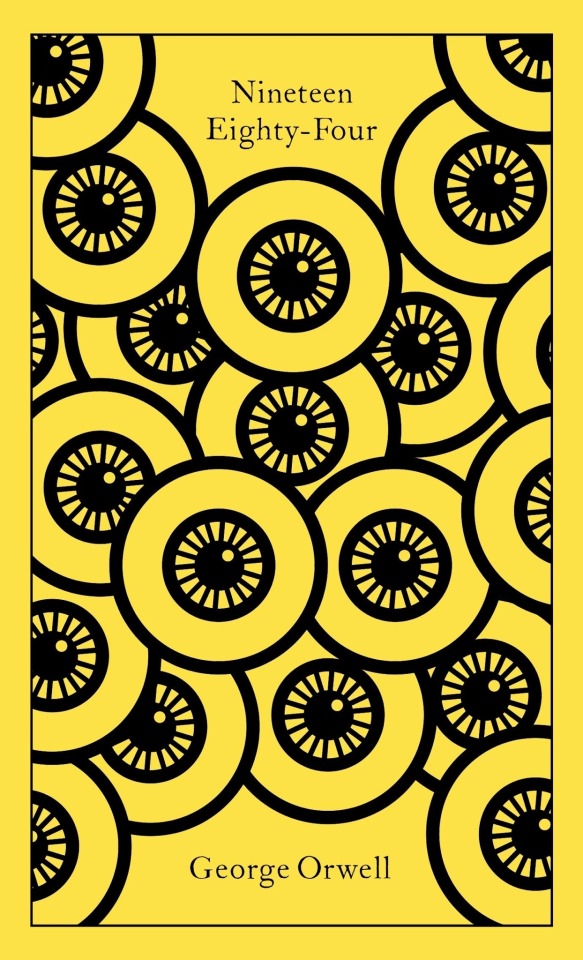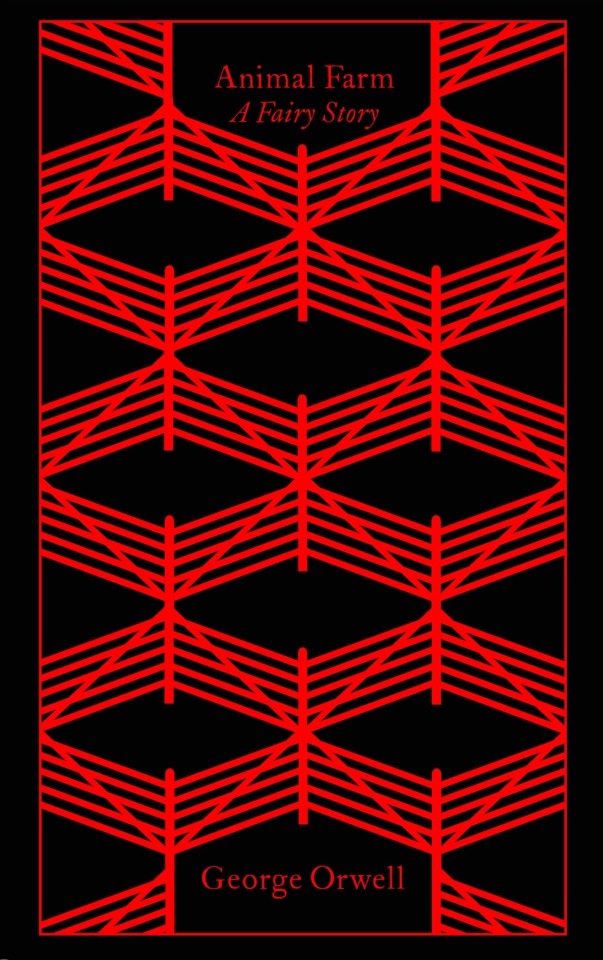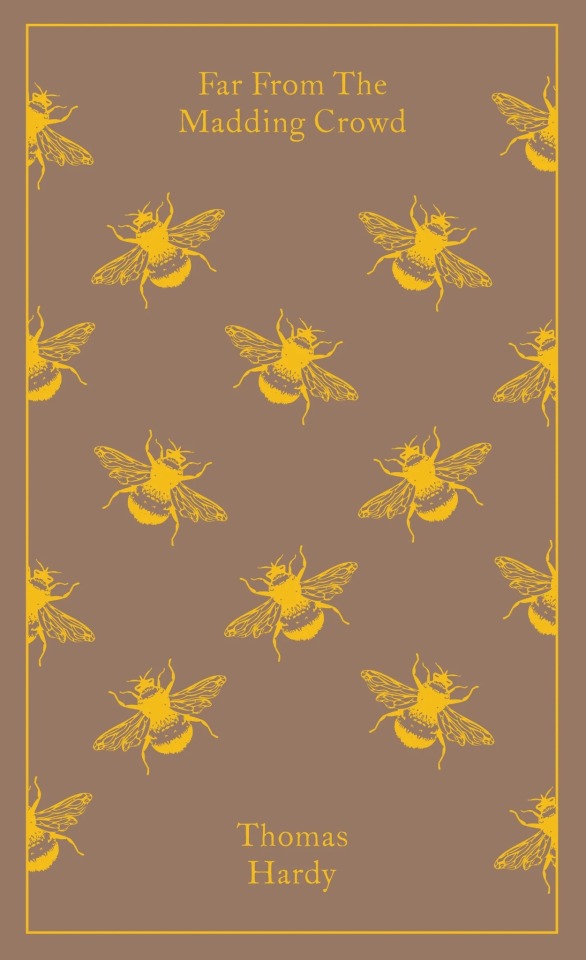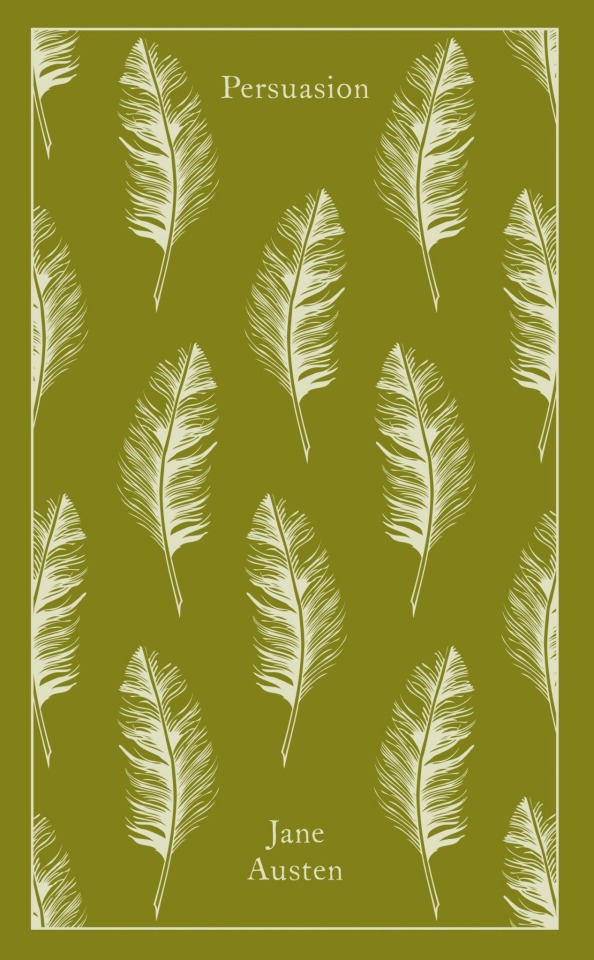#coralie bickford-smith
Text
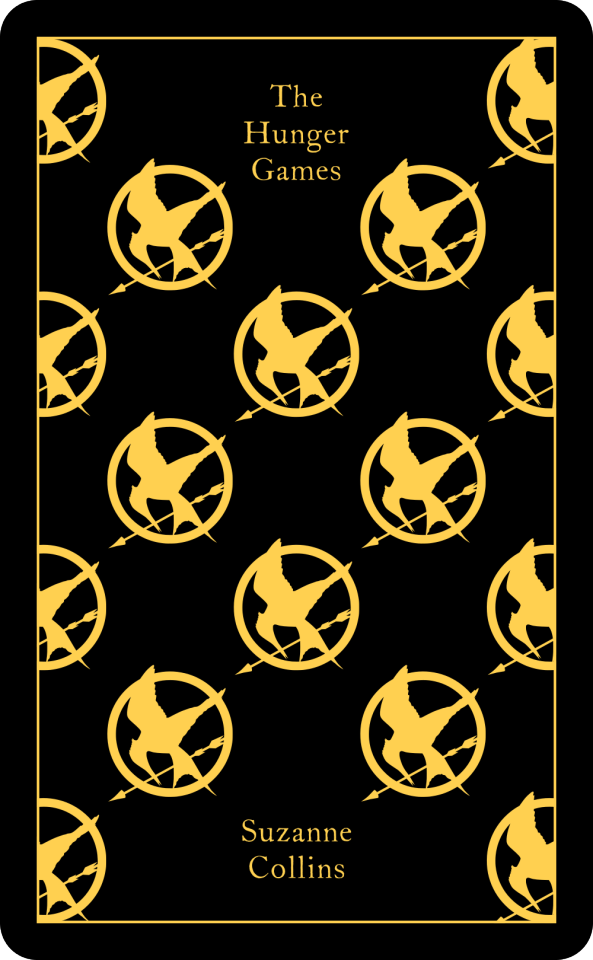

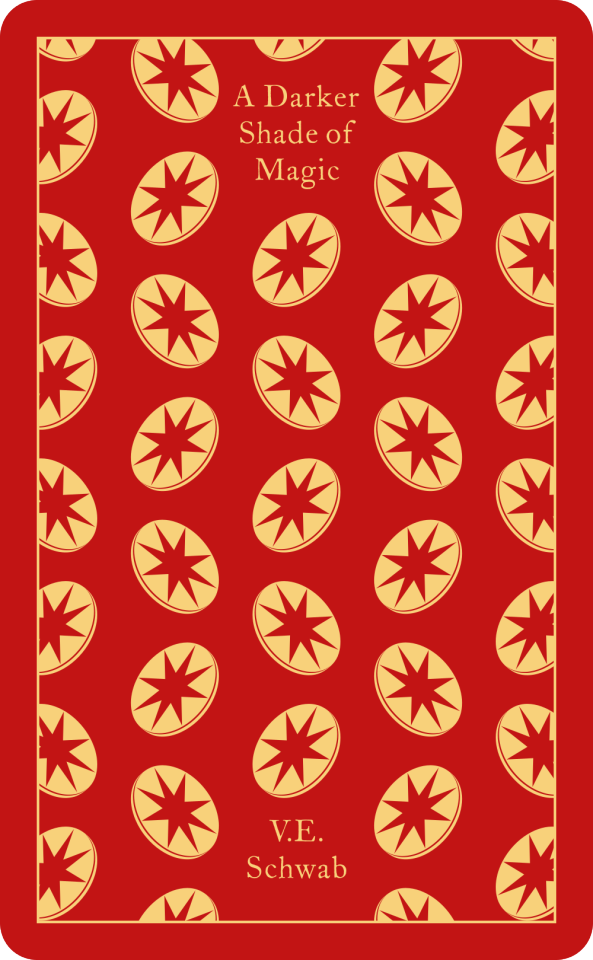
i had a lot of fun with the ‘clothbound classics’ stickers i made, and decided to branch out! these aren't precisely ‘classic’ novels (though i would argue the hunger games is a sufficiently biting social commentary that it will, with time, become one) but i like them, and i thought they’d look good in the same style
[Clothbound Classics on RedBubble]
#the hunger games#the raven boys#the raven cycle#a darker shade of magic#clothbound classics#coralie bickford-smith#fanart#lj arts
21 notes
·
View notes
Text

F I N I S H E D : The Song of the Tree by Coralie Bickford-Smith.
0 notes
Text
Part of Penguin's beautiful hardback Clothbound Classics series, designed by the award-winning Coralie Bickford-Smith, these delectable and collectible editions are bound in high-quality colourful, tactile cloth with foil stamped into the design. In The Canterbury Tales Chaucer created one of the great touchstones of English literature, a masterly collection of chivalric romances, moral allegories and low farce. A story-telling competition between a group of pilgrims from all walks of life is the occasion for a series of tales that range from the Knight's account of courtly love and the ebullient Wife of Bath's Arthurian legend, to the ribald anecdotes of the Miller and the Cook.
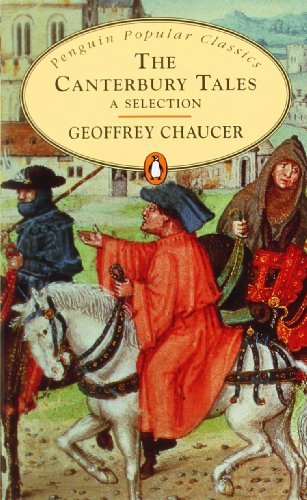

#book: the canterbury tales#author: geoffrey chaucer#genre: classics#genre: poetry#genre: short stories#year: 1400s
13 notes
·
View notes
Note
Happy December lilli! Do you have any book or other recs to help a guy giftshop?
Happy December, anon! 🧡 I'm sorry this took me so long to get back to! Admittedly, this year I'm not very well-prepared for the festive season myself. There are a few illustrated books that I've longingly stared at in bookshops throughout the year - maybe they'd work for someone in your life?
The Lost Spells by Robert MacFarlane and Jackie Morris, sort of a mix between poetry anthology and spellbook, which matches moody and strange and enthralling poems with the animals and plants they evoke. The illustrations in this are breathtaking.
The 2021 edition of Pictures by J.R.R. Tolkien, a collection of jirt's illustrations.
A Walk in the Woods by Bill Bryson, specifically the Folio Society Edition with illustrations by James Weston Lewis. This is a book about the Appalachian Trail, but honestly if hiking's not your thing this is still worth holding in your hands just to stare at.
The Fox and the Star (hardcover) by Coralie Bickford-Smith is one of those books that are marketed as picture books for adults, but in essence it's a well thought-out and touching picture book I could see working for most ages.
I must have recommended it before but What We See in the Stars by Kelsey Oseid is one of my favourite illustrated books. It's a collection of constellation stories from myth and history that's just beautifully designed.
Some allrounder gift ideas that I cheat with a little every year because they're easy to customize and match to individual people:
Candles. This never fails. Elaborate handmade bees' wax candles for people who enjoy pretty things, subtle scented candles for my brother who's too shy to buy them for himself, prayer candles with famous writers on them for me specifically, Snoopy candles for my mum. I think there's a candle out there for most types of people.
Casual, functional merch - warm winter Starfleet Academy scarf, T-shirts with subtle prints, Tree of Gondor Christmas ornaments; nerds are easy to buy gifts for.
Ceramics! Gifting someone a mug has sort of gotten this connotation of being unimaginative or impersonal, which is really only true if it's not, like, a really good mug. Ceramics are art with a practical purpose. If you have some idea of someone's taste, looking up ceramic artists on etsy is always worth a shot.
Stationery - admittedly not a lot of people hand-write things these days, but there's a good chance you know at least one person who'd enjoy a nice sticker sheet, a letter set, a personalized Ex Libris stamp or some beautiful note cards or to-do lists. Individual artist's shops are a good place to look for unique designs.
#finally had a morning all to myself to tackle this message thank you anon <3 this made me feel festive#asks#anon
8 notes
·
View notes
Text
Coll. « Gothic Horror » PENGUIN BOOKS
Royaume-Uni, 2008
Offset, 181×111 mm (71/8 × 45/8)
La collection rassemble dix classiques de la littérature fantastique et du « roman d’horreur » anglophone au format poche.
La ligne graphique a été conçue par la graphiste Coralie Bickford-Smith, qui a créé pour chaque couverture une image originale utilisant la technique du cyanotype, un procédé primitif de la photographie inventé en 1842 par le savant britannique John F. W. Herschel (1792-1871). Le caractère typographique employé est le Futura (1927) de Paul Renner (1878-1956).

(1) Quelle relation établissez-vous entre le procédé iconographique employé ici et les romans rassemblés dans cette collection ?
La technique employée consiste à exposer un objet sur un papier photosensible. Il faut d’abord, dans l’obscurité, laisser sécher le mélange photosensible appliqué sur le papier puis exposer à des rayons ultraviolets l’objet par dessus. Une empreinte en négatif de l’objet est alors révélée sur un fond très obscure en positif. Cette apparition fantomatique s’associe à l’imaginaire surnaturel du genre gothique de la collection. Dans les histoires gothiques, des fantômes, des monstres, des esprits surgissent dans le réel, à l’image de l’objet sur le papier.
Les empreintes en monochromie jaune, ou bichromie blanche, sont éclatantes. Elles entrent en contraste avec le fond noir. Coralie Bickford-Smith joue avec le principe de positif et de négatif, inventé par John F. W. Herschel suite à l’invention du cyanotype, et semble l’associer aux concepts de ténèbres et de lucidité qui sont des thèmes en conflit dans les oeuvres gothiques. De plus, cette contrainte d’une gamme colorée réduite , imposée par la technique, autorise une constance visuelle pour chaque titre ce qui renforce l’esprit de collection. L’emploi d’une triade chromatique est fréquent dans les collections de la maison. Dans « Mystery and crime » (1948-1961) le vert, le noir et le blanc interviennent, par exemple, de façon systématique sans faire intervenir d’autres coloris.
Chaque titre parvient néanmoins à affirmer son individualité. La variété des objets en couverture et le placement de ces derniers dans la page constitue un vocabulaire personnalisé pour chaque histoire. Les objets choisis sont des indices en lien avec l’intrigue de chaque livre de la collection. On peut deviner, dans The spook house, une accumulation de meurtres horrifiques puisque plusieurs couteaux recouvrent le livre. Dans The haunted hotel, on peut supposer que de multiples secrets sont à résoudre par la symbolique de la clé. La technique du cyanotype permet ainsi de produire des images logiques avec l’ histoire unique de chaque titre. La graphiste peut choisir librement le sujet photographié tout en conservant une gamme chromatique et une texture qui fait collection.

(2) Comment qualifieriez-vous le vocabulaire typographique (choix du caractère et de ses différentes variables, présence dans la composition) utilisé par la graphiste ?
La collection « Gothic Horror », à l’image du lieu de naissance de ce genre littéraire, s’inscrit dans la tradition britannique en matière de composition. Cette tradition est d’ailleurs une des spécificités des premiers ouvrages de la maison d’édition anglaise Penguin Books. Toutes les informations relatives à l’oeuvre sont donc centrées. On note quelques exceptions, notamment pour le titreThe spook house de Ambrose Bierce dont la composition renversée à la verticale est sûrement plus appropriée avec l’inclinaison des couteaux. La graphiste applique donc, en principe, une répétition du modèle de composition mais s’autorise de légères variations lorsqu’il s’agit de crée un dynamisme propre à certains titres vis à vis de leur image singulière.
Coralie Bickford-Smith choisit de composer le titre ainsi que le nom de l’auteur en Futura et systématiquement en capitales. Ce choix fait référence à l’usage du Gill Sans dans les premiers livres de poches de Penguin. Elle rajoute de l’espace entre chaque lettres comme conseillé par Tschichold dans les Penguin Composition Rules (1947-1949) pour plus de lisibilité. Ce clin d’oeil à l’histoire de la maison d’édition permet donc de souligner sa propriété de la totalité des titres. Ce dernier est, par ailleurs, rappelé dans le coin gauche de chaque titre par l’emblématique logotype d’Edward Young. L’image est même systématiquement travaillée pour ne pas déborder sur cet espace. On peut, dans The beetle de Richard Marsh, voir que le scarabée est incliné pour laisser la place nécessaire au macaron Penguin Books.
On constate cependant que une difficulté d’accord dans la taille des corps et dans les espacements entre les divers blocs de textes. En effet, la technique du cyanotype ne permet pas de réduire la taille des objets exposés. Les éléments typographiques doivent donc s’adapter. Cela implique une réduction ou augmentation du corps et des placements variable pour occuper les vides inoccupés par l’image. Néanmoins, Coralie Bickford-Smith s’applique à garder une classification identique des éléments. On retrouve, dans l’ordre, le titre de la publication, le commentaire de la critique, en bas de casse, et enfin le nom de l’auteur. Seuls deux titres, The haunted doll’s house et The spook house, précédemment cité, optent pour un ordre différent. Le titre est placé au milieu des autres informations, plus en retraits, car l’attention du lecteur doit se porter en priorité sur cet élément. Ces deux ouvrages sortent du cadre pré-établi car leur titres semblent nécessiter d’une promotion focalisée sur leur individualité plus que sur leur appartenance à la collection.

(3) Comment évaluez-vous le degré d’originalité de cette ligne graphique en regard du genre littéraire considéré et de la forme visuelle sous laquelle il est généralement présenté ?
De par les contraintes techniques, la proposition de Coralie Bickford-Smith semble en rupture avec la forme traditionnelle des livres gothiques. Du point de vue iconographique, la graphiste doit proposer un assemblage d’objets pour composer un motif en couverture. Cette proposition est bien plus symbolique et épurée que les formes visuelles traditionnelles employant plutôt des illustrations littérales. On peut constater, dans les autres collections, une tendance à représenter des scènes entre les personnages, souvent pris d’effroi, ou une représentation du lieu de l’intrigue, tel un manoir. Ici, Coralie Bickford-Smith fait le choix de rompre avec la fidèle traduction visuelle du texte. L’objectif est de laisser la surprise au lecteur tout en attisant sa curiosité. Elle mise donc sur visuel mystérieux et symbolique pour entretenir le suspens.
Typographiquement, il est d’usage d’employer des caractères stylisés et fantaisistes dans les publications de ce genre littéraire. On retrouve traditionnellement des formes très courbées, voire des arabesques aves des empattements ou l’emploi de caractères gothiques. Ici, le Futura reste muet face au genre. Il s’accorde avec l’image dans la sobriété géométrique de ses formes. Seule sa composition rappelle l’esthétique anglaise du genre littéraire.
5000 types
16/ 04/ 2023
6 notes
·
View notes
Text
youtube
This is a delight to watch. Coralie Bickford-Smith talks about her process designing the Penguin Clothbound Classics.
3 notes
·
View notes
Text
Observational Drawing Outside
On Tuesday we went to People's Park to do some observational drawing of nature to inspire our backgrounds. At first I focused on mark-making to just get a feel for my surroundings before I did more detailed sketches.
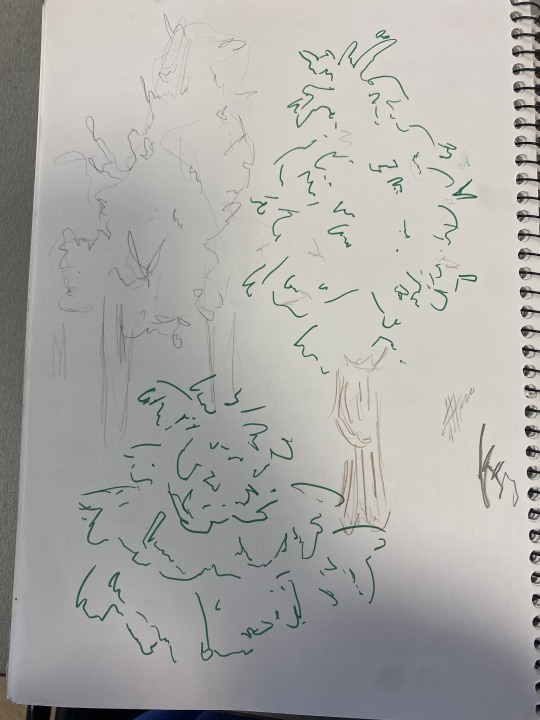
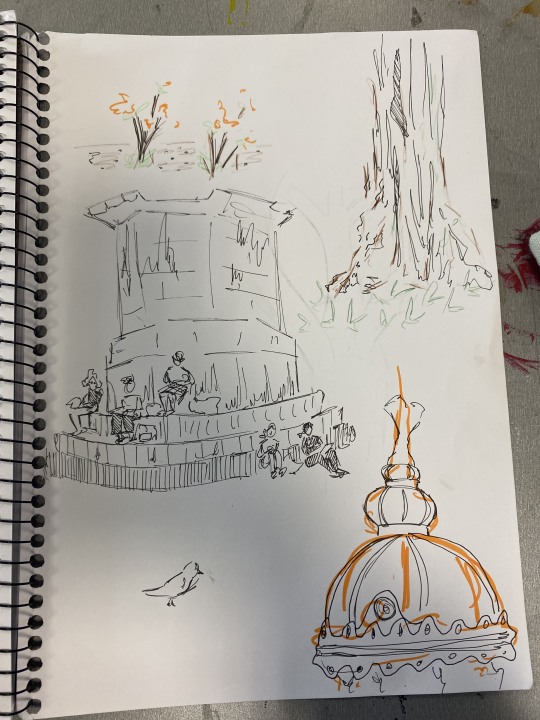
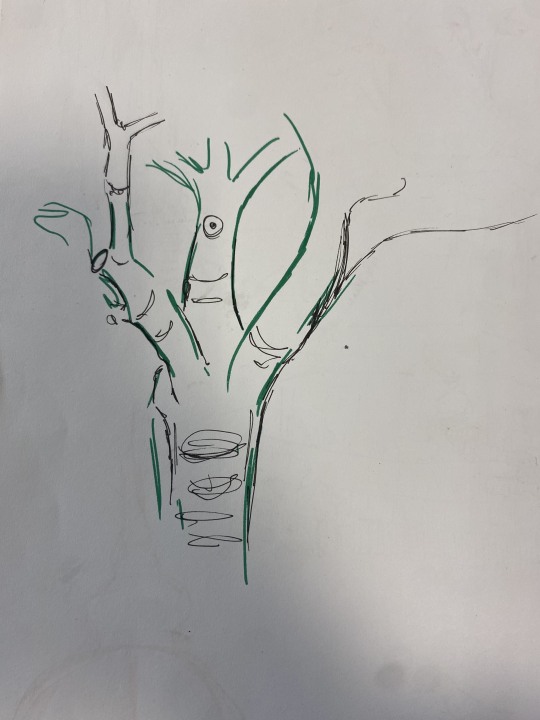
Paul told me to use more pencil for a while rather than pen so I did that and was more successful. I use pen and marker to start drawings sometimes just to make marks that I'm not able to erase and then feel less afraid of making mistakes.
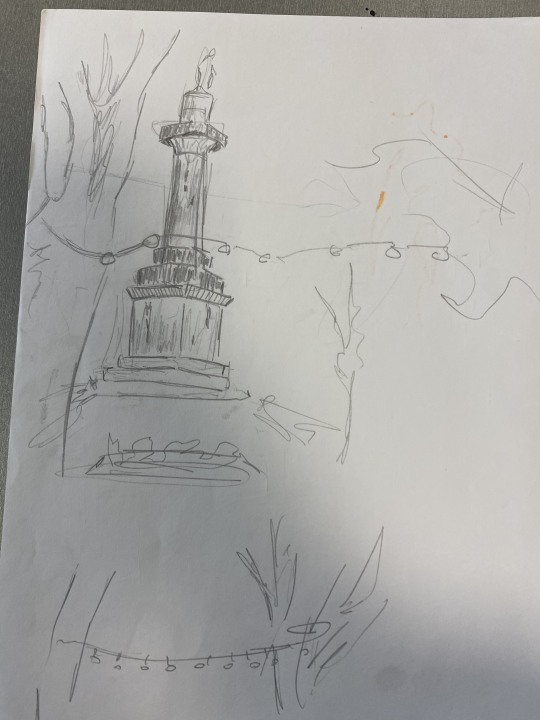
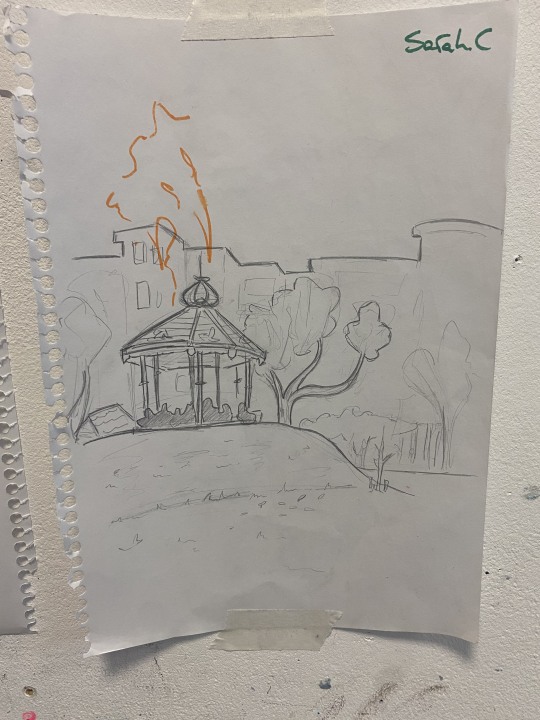
I did a drawing of the gazebo with people inside it from a distance and it was my most successful drawing. It has a foreground (grass area), a middle ground (hill and gazebo) and a background (buildings outside the park). I chose this drawing as the one to develop more for a background.
When we got back to the studio I did some random development of different sketches before focusing on that specific drawing. I mainly focused on the shapes of the trees and how to represent that. I was inspired by the tree illustrations by Coralie Bickford-Smith in "The squirrel and the lost treasure" and how they were mainly solid shapes made up of block colours.
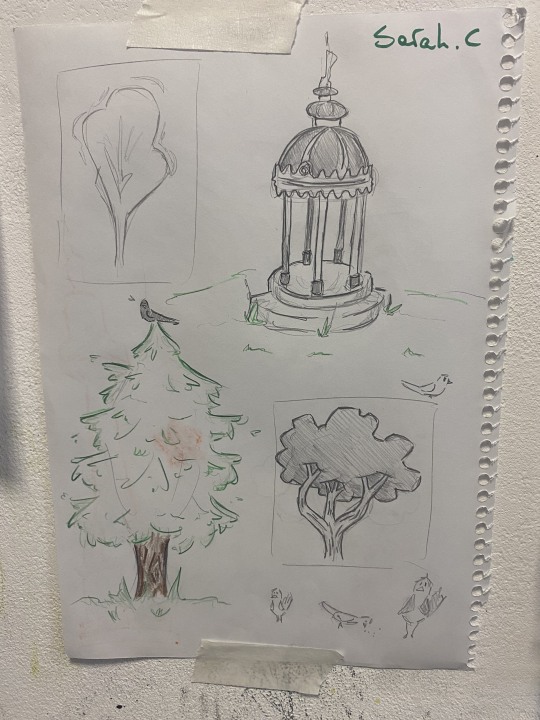
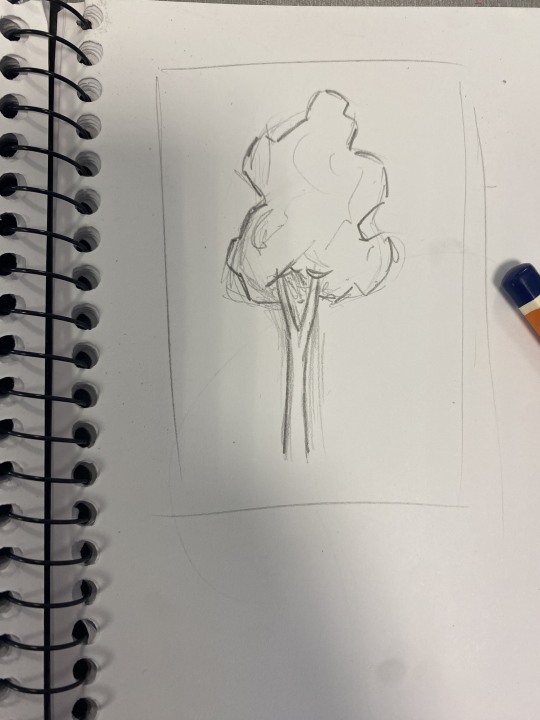
I then did a little sketch of the layout of the background and where the mini-me model would fit into it.
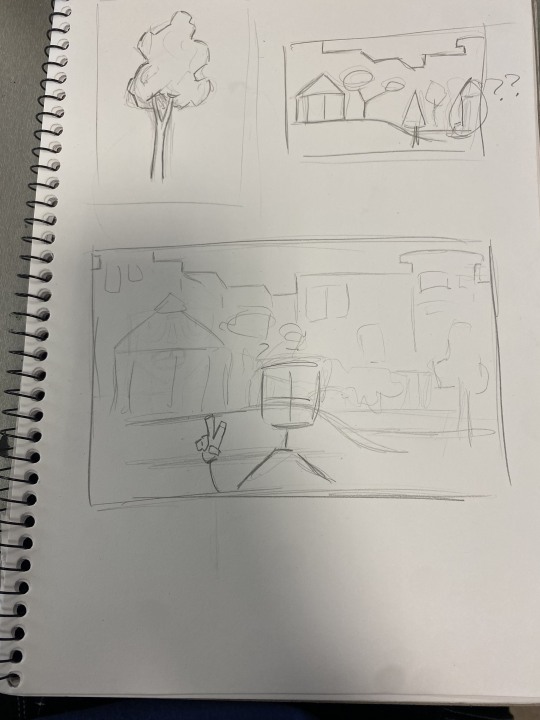
After that I was able to draw my background on an A3 sheet.
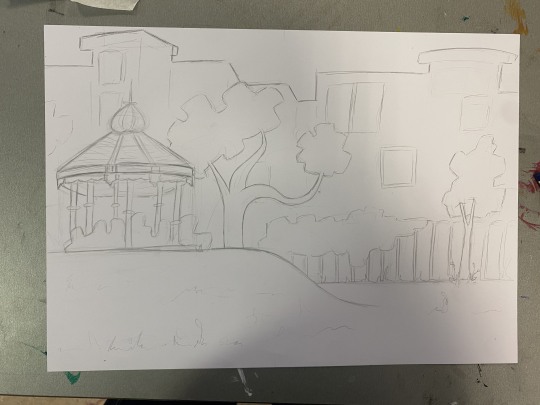
I was unsure what colours or materials to use yet so I finished there for the day.
1 note
·
View note
Text
« Gothic Horror » par PENGUIN BOOKS
Royaume-Uni, 2008
Offset, 181×111 mm (71/8 × 45/8)
La collection rassemble dix classiques de la littérature fantastique et du « roman d’horreur » anglophone au format poche.
La ligne graphique a été conçue par la graphiste Coralie Bickford-Smith, qui a créé pour chaque couverture une image originale utilisant la technique du cyanotype, un procédé primitif de la photographie inventé en 1842 par le savant britannique John F. W. Herschel (1792-1871). Le caractère typographique employé est le Futura (1927) de Paul Renner (1878-1956).

Aperçu des différents titres de la collection
Quelle relation établissez-vous entre le procédé iconographique employé ici et les romans rassemblés dans cette collection ?
Le moyen technique utilisé par la graphiste Coralie Bickford-Smith pour atteindre ce rendu visuel est le cyanotype. Le cyanotype est un ancien procédé photographique développé au XIXe siècle. Il implique l'application de deux solutions chimiques sur un support, suivi d'une exposition à la lumière ultraviolette. L'exposition crée une réaction chimique produisant un motif bleu distinctif. Après le lavage, l'image finale se dévoile en positif blanc sur un fond bleu prusse intense. Dans cette collection de « Gothic Horror », le principe est utilisé à l’aide d'objets et d'animaux quelconques en rapport avec les récits qu’ils représentent.
Le lien à établir entre le procédé iconographique et les romans est assez simple. Le cyanotype, créé à partir de la lumière, vient dessiner une image de façon positive. L’objet se dessine grâce à l’assombrissement du fond qu’il ne protège pas de la lumière. L’image semble résulter de la pénombre, surgir de ce fond bleu. Cette esthétique « d’apparition » fait écho à l’ambiance sombre et fantomatique des récits gothiques. On peut aussi remarquer que l’utilisation d’un papier non couché donne du relief à ces effets de lumière et d’ombre par la présence du grain. La technique du cyanotype crée par ailleurs un effet de « flottement », de flou fantomal ; les contours des objets, alors vaporeux, deviennent eux-mêmes des figures fantomatiques. Cet aspect « éthéré » dessine un aspect surnaturel, renforçant l’atmosphère lugubre des couvertures.

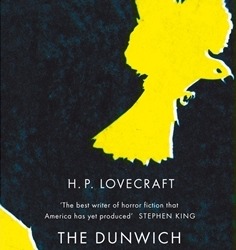
Détails,
On s'aperçoit du flou fantimatoque créé par le procédé cyanotype et de l'aspect profond que confère le grain à l'image.
Enfin, le procédé du cyanotype vient limiter la palette colorimétrique à deux tons : jaune, bleu, et le blanc du papier qui s’inscrit en défonce. Cette restriction crée une uniformité, établissant un lien logique entre chaque titre de la collection. Cependant, cela n’altère pas l’individualité de chaque titre qui est librement composé à partir d'objets liés à leur intrigue.
La graphiste a fait le choix de composer à partir de deux tons après s’être inspirée de la ligne éditoriale d’anciennes collections de romans policiers. Cette palette réduite n’est en effet pas sans rappeler la collection Mystery and Crime (1948-1961) de Penguins, où la triade de couleurs vert, noir et blanc inscrit chaque titre dans la collection. Personnellement, cela m’a immédiatement rappelé la collection Série Noire de Gallimard, elle aussi limitée à deux tons, tons, se rapprochant ailleurs à ceux choisi dans la collection Gothic Horror. Cette référence à l’univers de la littérature policière n’est pas anodine et vient renforcer l’univers sinistre dans lequel la collection s’inscrit.



Exemple de collections de romans policiers adoptant des palettes de couleurs restrictives.
Enfin, dans la suite du registre iconographique, on peut remarquer « l’inconsistance » des marges des cyanotypes. Celles-ci ne sont pas toutes similaires et ne forment jamais un rectangle parfait. Ces fonds créent des formes difformes, diverses aux aspects surréalistes sur chaque récit. Ce détail, qui peut paraître dérisoire, me rappelle l’univers architectural géométrique et surréaliste du film du Cabinet du docteur Caligari, un métrage s’inscrivant comme référence dans l’histoire visuelle du genre gothique.
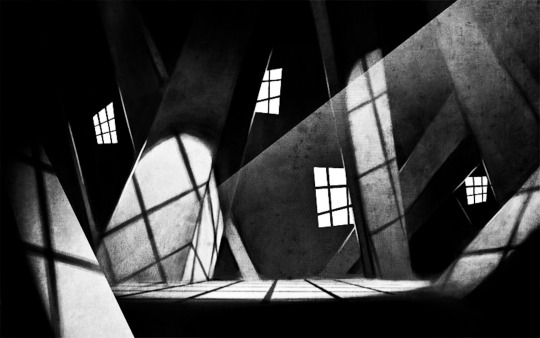

Détails,
Mirroir entre la forme d'encrage et l'architecture du film Le Cabinet du Docteur Caligari
On remarque par ailleurs que certains de ces titres dépassent ces contours définis ; The Masque of the Red Death, The Beetle et The House on the Borderlands. Cette liberté de composition dessert les intrigues de ces histoires, The House on the Borderland étant un récit incorporant une histoire d'autres dimensions, The Masque of the Red Death explorant les limites au-delà de la mort, ou encore avec The Beetle où cette sortie du cadre fait écho à l’aspect grouillant des coléoptères.

Détails,
Titre où figure du hors-champs
Comment qualifieriez-vous le vocabulaire typographique (choix du caractère et de ses différentes variables, présence dans la composition) utilisé par la graphiste ?
La composition typographique se dévoile simplement, à l'aide d'un caractère linéal sans empattement. Elle dénote des conventions du milieu de la littérature gothique en s'éloignant de caractères très décoratifs et pleins d'arabesques. L'attention est portée sur l'apport d'informations de manière claire mais discrète, afin de ne pas sacrifier l'impact visuel des éléments iconographiques. On remarque que les informations principales se déclinent en majuscules (titre, mention d'auteur) tandis que les citations secondaires se déclinent en bas de casse. Ces citations, ayant pour vocation d'intéresser le lecteur au livre, ne prennent alors pas le dessus sur le visuel, contrairement aux pastilles et systèmes de recommandations que l'on peut apercevoir aujourd'hui, lesquels viennent dénaturer les visuels. Ces nouveaux procédés prennent le dessus sur le récit, projetant la recommandation au premier plan. La recommandation semble alors être le seul argument de vente du livre, tandis qu'ici, l'inscrire de façon plus discrète permet de ne pas détourner l'attention du titre.
La composition distincte et simple la collection « Gothic Horrors » n'est pas sans rappeler la composition des Penguin Classics en Gill Sans, un caractère moderne similaire au Futura. Ce choix suit la tradition de composition britannique et inscrit la collection dans la lignée visuelle associée à la maison d’édition Penguins. Cet aspect est amplifié par l'exagération de l'interlettrage et lune composition majoritairement centrée, comme défini dans la collection Classics par les règles de Jan Tschichold.
La simplicité du caractère permet par ailleurs de s'adonner à des compositions plus originales. Comme on peut le voir sur deux des titres de la collection : The Haunted Doll's House et The Spook House. Ces deux titres font office d'exceptions, s'imbriquant aux éléments iconographiques de manière à ne pas les dénaturer ou détourner des choix visuels forts. L’unification de la collection s'établit à partir de plusieurs paramètres (tons, procédés…) qui s'entrecroisent plutôt que seulement sur une mise en page définie.
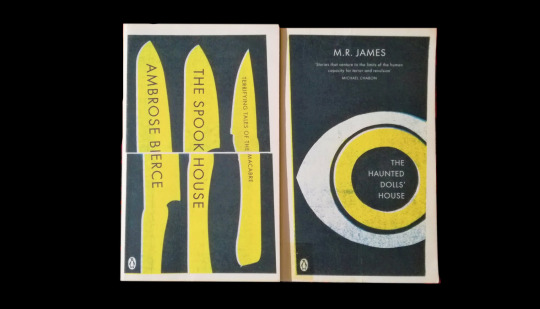
Détails,
Titre où l'informations se décline autour de l'iconographie
Comment évaluez-vous le degré d’originalité de cette ligne graphique en regard du genre littéraire considéré et de la forme visuelle sous laquelle il est généralement présenté ?
La collection Gothic Horrors de Penguin se démarque réellement du milieu littéraire gothique par sa ligne graphique. En effet, plutôt que de jouer sur des images suggérant la peur, tout se décline ici par l'abstraction. L'aspect lugubre émane du procédé techniques utilisé et du résultat qu'ils produit, plutôt que des éléments hautement figuratif. En effet, la ligne graphique du genre gothique semble souvent reposer sur des représentations littérales de l'épouvante, avec des personnages dans des situations effrayantes. En lien avec le récit gothique, l’abstraction, a ici, pour but de maintenir le suspense, conditionnant ainsi le lecteur au genre du récit qui l'attend. Cela lui permet également de construire de lui-même l'univers lugubre du récit, sans avoir d'image préconçue.
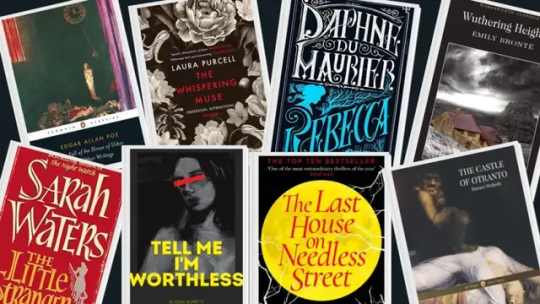
Exemple d'autres couvertures du même genre littéraire, où l'on aperçoit une sur-ornementation, la présence de caractères stylisés au possible, et une utilisation iconographique naïvement figurative, ne laissant aucune place à l'imaginaire.
Enfin, on remarque que cette collection Penguin se démarque aussi par son choix typographique, qui s'écarte vraiment de l'utilisation simple de caractères gothiques ou de tout autre caractère décoratif et sophistiqué. Ici, aucune arabesque, aucun empattement, aucune graisse marquée n'apparaît sur les couvertures. S'éloignant de toute sur-ornementation associée au style gothique, ici, toute la puissance graphique repose sur une iconographie sobre et légèrement suggestive.
7100 caractères
0 notes
Text
Coralie Bickford-Smith
Coralie Bickford-Smith is one of the most renowned designers in the publishing industry, especially recognized and celebrated for her illustrated covers of Penguin's clothbound classics
The cloth is applied to the hardcover books in a similar way to the printed paper case bound books. Clothbound books tend to have a more premium feel than the regular hardcover bound books. Clothbound hardcover books almost always come with some type of foiling applied directly to the cloth wibalin.
Wibalin is a hardwearing uncoated paper with a matt fabric like textured finish.

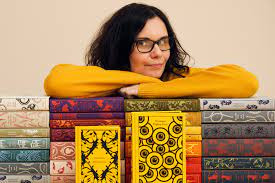
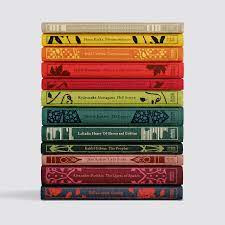
I like theses covers, even though they are classic stories, they look like classic 19th Century book covers, but have been made modern by using the bold colours that make them stand out.
0 notes
Text
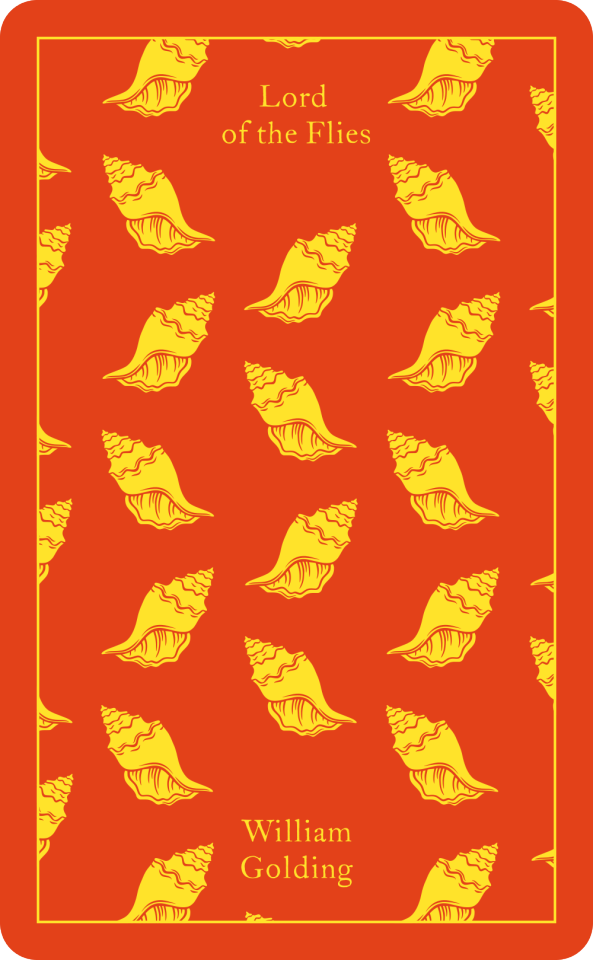


i recently fell in love with coralie bickford-smith’s penguin clothbound classics series, and upon seeing some of my favourite books haven’t been (or at least, have yet to be) redesigned in this really slick, symbolic style, i decided to take a crack at them myself!
[Clothbound Classics on RedBubble]
#clothbound classics#lord of the flies#the great gatsby#the scarlet letter#coralie bickford-smith#fanart#lj arts
10 notes
·
View notes
Text

Research - Judge a book by it's cover
I decided to look into the timeline of Penguin book covers for Animal Farm and how they've changed over the decades.
1951- This original cover was published just 6 years after the book itself, sporting the iconic “triband” design by Edward Young. This meant Animal Farm became part of the Penguin fold.
1963- The cover was reformed into the 'Modern Classics' family incorporating the Joanna typeface by Eric Gill as well as illustrations by Paul Hogarth. The illustrations depict a dictatorial pig chasing away some terrified looking dogs. I like the abstract 'scratchy, energetic' style he uses.
1970- The 'Modern classics' underwent their first makeover in the 70s featuring a black border around a painting by Joan Miró: 'The Tilled Field'. this is only a segment of the painting that includes abstract editions of farm animals around a barn as well as an omniscient eye and ear in the top right.
1989- The cover was redesigned in it's mist representative form yet featuring a segment from the painting: 'Pig-Spread', painted in by the artist Ditz. The pigs appear alternating direction but generally look quite pleasant.
2000- To celebrate the Penguin classics turning silver in the new millennium, the cover transitioned from the cuteness of the previous cover into a more political stance of a pig standing bullishly over a red star.
2009- The cover took an even more abstract turn at the hands of Designer Marion Deuchers. Featuring the iconic final version of the commandments are scrawled in Deucher's handwriting at the top in pink. There is chicken and coop imagery amongst the opaque red background behind a sliver of light that reveals a commanding pig.
2016- As a part of the Coralie Bickford-Smith's re-invention of Penguin classics, Animal Farm steered away from it's usual red colour palette, turning green for the first time yet. Also, horses were brought to the forefront in an eery repeating pattern of silhouettes tumbling through the air against a glared background.
2020- Coralie Bickford-Smith reinvented the penguin books again for a new decade, but this time returned to the classic red and black theme. Smith's version however is the first to leave out a significant aspect: animals. “I just used pen fences,” she told Penguin.co.uk, “So simple.” A striking new look for the cloth-back hard-back version.
0 notes
Link
While looking into her designs for the clothbound books I also found her portfolio where I was able to look into other work that she has done. I quickly found that the clothbound classics weren’t the only piece of work that really inspired me. She has created multiple beautiful products ranging from prints, notecards, book designs and many more. Her works shows that both digital designs and illustrations can work perfectly together, something I have struggled to keep cohesive in the past.
0 notes
Text
Penguin Books and Visual Motifs
Coralie Bickford-Smith
Smith is responsible for designing the clothbound covers of Penguin classics. Smith talks about her analogue process of mark-making as a means for cultivating ideas. Delving into the books, she identifies elements and pivotal points within the text to represent the book. For example, the design for Dracula uses a garlic flower to play on the idea that the reader is protected from Dracula-he is contained within the book. She is also predominantly inspired by Victorian-era binding and the lavish designs that would adorn the covers. The clothbounds are created by pressing foil into the cloth.

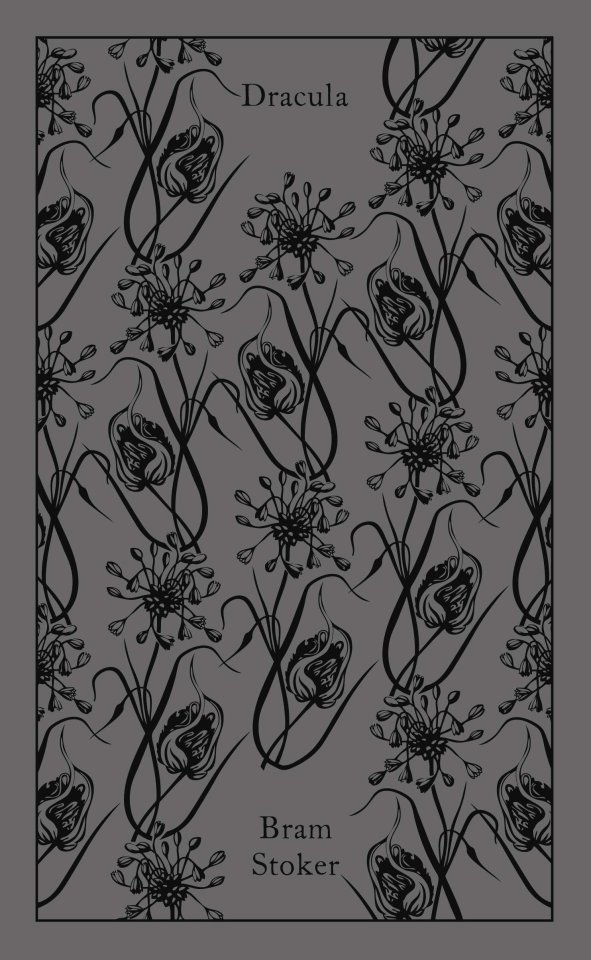
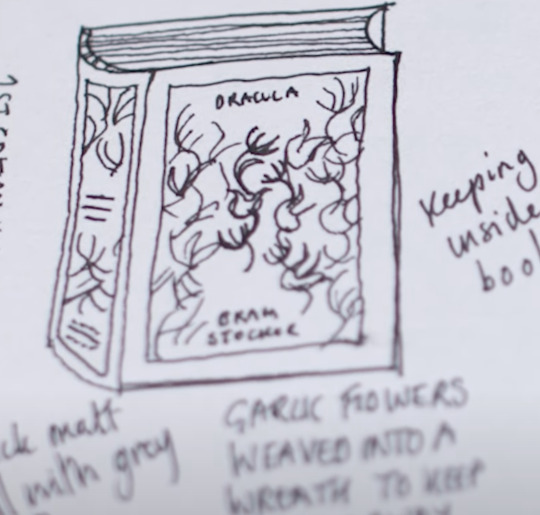
I researched important visual motifs as well as characters within the books to conclude on imagery I can represent in the charms.
Penguin Romance Books
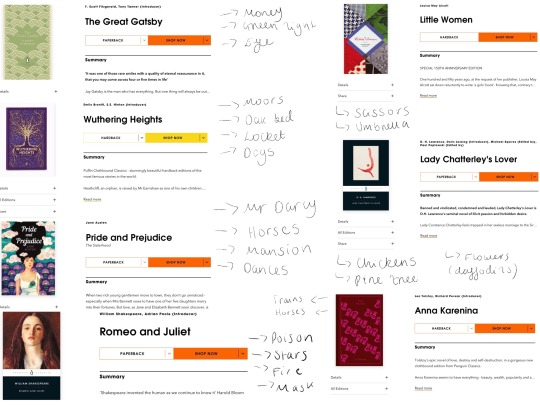
Penguin Horror Books
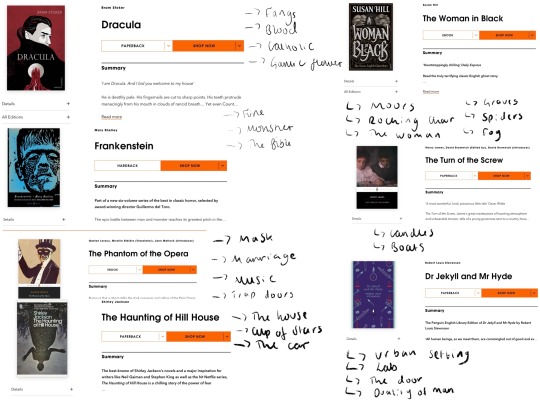
Penguin Fantasy Book

Two from each book will be selected and drawn
0 notes
Photo

Research into cover collections
Green Ideas: this series is about 75 years of writing about the environment, and each cover design is based on the title of the book. The choice of the rainbow was to unite the series and shows how the books connect with each other.

Great Ideas: this series “offers groundbreaking works by some of history’s most prodigious thinkers”, all the books are non-fiction. The covers use a type design to highlight the bookmaker's art.

Science Fiction: this series is Penguin’s classic science fiction books. The design has purple spines and uses black-and-white illustrations from Picasso, Le Corbusier, Hans Arp, Saul Steinberg and others. The covers bring modernism and old-school science fiction together.

Clothbound Classics: this is a well know collection known by a lot of people and is seen in most Waterstones over the UK. Their covers are what make them so popular to this generation, designed by Coralie Bickford-Smith. “Custom patterns inspired by each work stamped on linen cases, coloured endpapers, and ribbon markers”.
0 notes
Note
10, 16, 17 📚📚
hii 🤍
10. do you have a guilty fav?
i really tried to think about it but i don't think so! i aven googled "guilty pleasure books" to see if i could relate to some answers but nope... i mean maybe i have one that could be considered as such by most people but i don't feel guilty about it so idk lol
16. how many books have you read this year?
so far i read 28 books :-) the last one being housekeeping my marilynne robinson (loved it. it's beautifully written)
17. top 5 children’s books?
omg what a fun question :-) i love children's books! i can't make a top 5 but here 5 books that i loved
the fox and the star by coralie bickford-smith. god don't get me started about this book!!!! it's so gorgeous. coralie bickford-smith is a cover illustrator at penguin books and her illustrations are incredible. the style of this book is ispired by william blake and william morris and it just creates the perfect fairytale atmosphere. the story is sweet <3 a fox who loses his only friend, a star, and is sad and forced to wander through the darkness alone, until he learns how to enjoy his life again. a story about loss! suffering! grief! love! acceptance of the change!!!❣❣❣
pezzettino by leo lionni, who was a renowned italian-american (born in the netherlands) illustrator for children's books. "pezzettino" means "little piece" in italian and it's the name of our protagonist who is a small, orange cube. the world he lives in is populated by big, colorful and strong creatures and he feels so small in comparison that he thinks that he must belong to someone… but oviously eventually he learns that he perfect how he is!!!!😭😭😭 i swear it's so heartwarming and lovely… and the mosaic style are always loved by small children <3
before/after by Anne-Margot Ramstein and matthias arégui. a silent book with delightful illustrations. the idea is quite simple: its aim is to show the little one show things change and transform (ex. a caterpillar emerges into a butterly; an acorn might become a oak tree; a set of ingredients can become a cake…). what i love about this book is that the illustrations have like… a philosphical nuance, sometices also comic! i really loved it, and i think that wordless books are really fun and can also target a group of readers, especially children, who are non-verbal or just prefer looking at pictures rather than words :-)
imagier du vivant by martin jarrie another silent book. idk if there is a translation of imagier in english… i know that in france they're very common- they are basically picture books that present photos or illustrations of a series of objects/ animals/ clothing/ fruit/ vegetables/ etc. they are generally made for children and their goal is to make them more aware of the world around them. i couldn't find the english title, maybe it hasn't been published in any english speaking countries yet. this book is filled with vibrant and phenomenal illustrations that evoke the atmosphere of the countryside- flowers, vegetables, animals. what is cool is that there isn't an obvious order of these illustrations, they're mostly associated by color. i think it's a great book that can stimulate a child's creativity and imagination :-)
the book of everything by guus kuijer. okay this book holds a special place in my heart because it was the very first book i read for a reading club at my local library like 5 years ago <3. this book was chosen because it was the first meeting of the club, and since a lot of people agreed last minute to participate, the librarian opted for a short children's book that everyone could read. it was great seeing grown adults (except from me and my friend, who were just teens) discuss a children's book with such vehemence and spirit! to be fair, this book features themes such as domestic violence, the characters are very interesting and the story is so powerful <3
book asks
#this was so long i am SORRY this is why i never do ask games... i am annoying...#thank you sooo much for the asks <333#answered#ask game
1 note
·
View note

